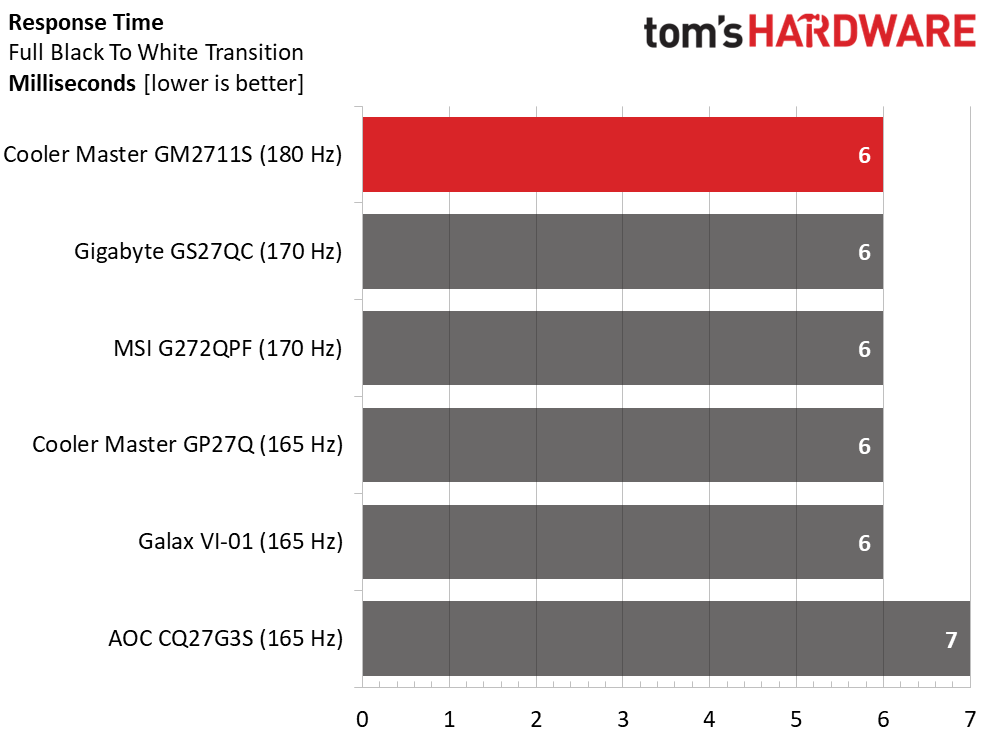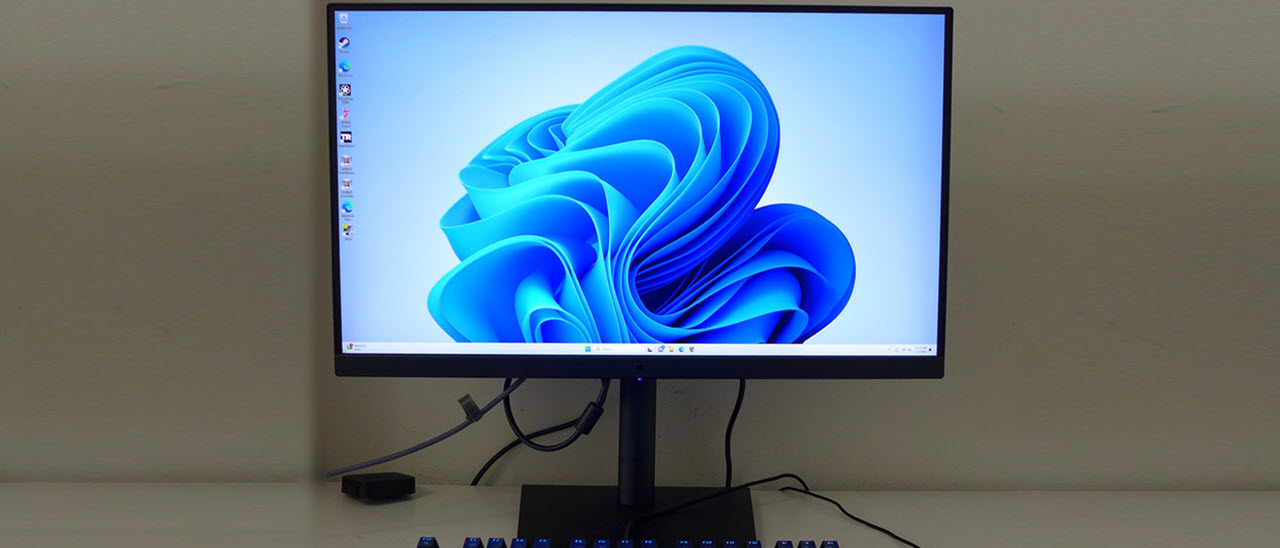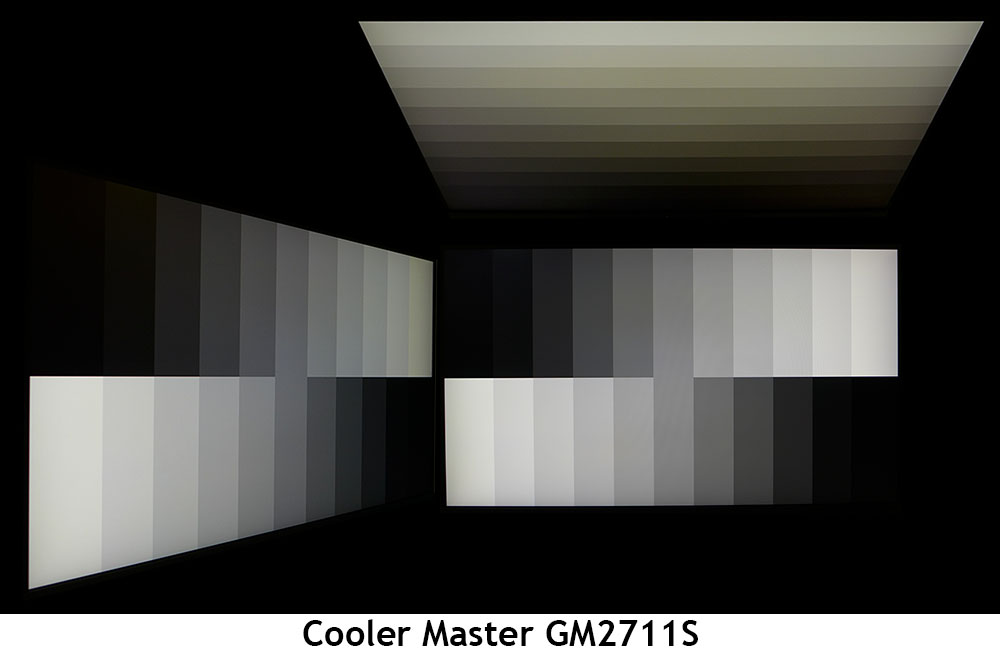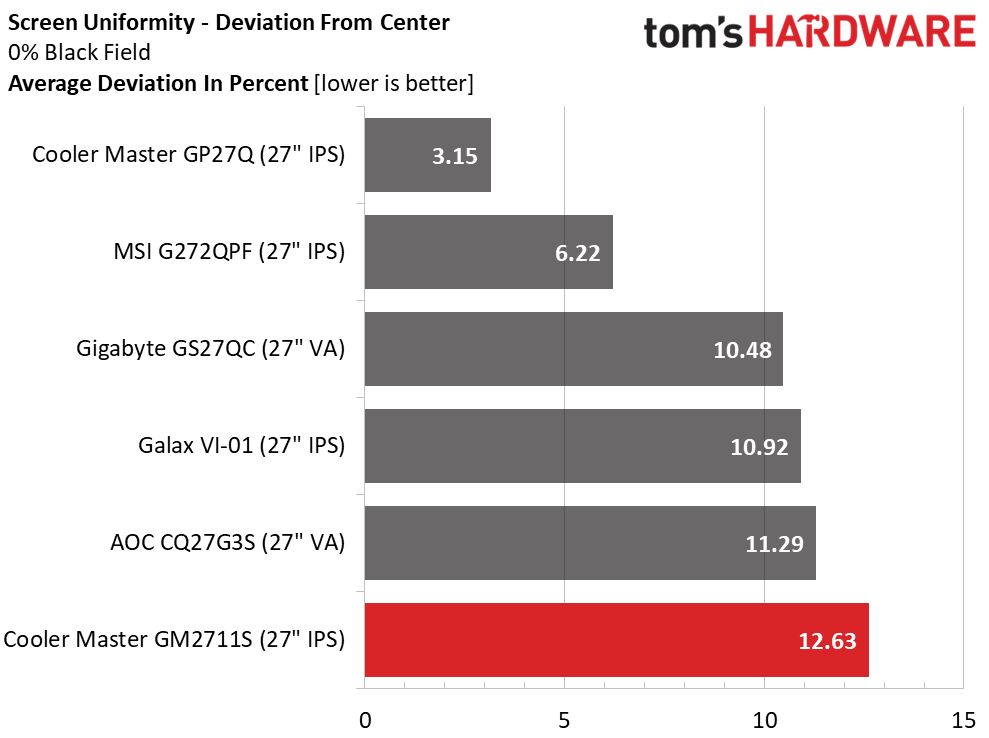Why you can trust Tom's Hardware
The 27-inch QHD category is packed with 165 Hz screens, so the GM2711S’s 180 Hz gives it a slight advantage. For this group, I’ve included Cooler Master’s GP27Q along with Gigabyte’s GS27QC, MSI’s G272QPF, Galax’s VI-01 and AOC’s CQ27G3S.
Pixel Response and Input Lag
Click here to read up on our pixel response and input lag testing procedures.


Most 165-180 Hz monitors will draw the screen in 6ms, though the AOC takes 7ms, which decreases its motion resolution relative to the others. The GM2711S has one of the best overdrives, so when coupled with 180fps operation, it will be super-smooth with Adaptive-Sync in play. MPRT makes it a tad smoother if you can deal with the occasional frame tear.
Input lag is fairly low at 26ms, putting the GM2711S mid-point in the category. If you can perceive a 3ms difference in lag, consider a monitor running at 360 or 500 Hz. 26ms provides an excellent gaming experience for most players.
Test Takeaway: The GM2711S has a little faster refresh and better overdrive than the other monitors. It’s among the best in class for response and feel, with excellent motion resolution and no perceptible control lag. It has the added advantage of a usable backlight strobe. Taken purely as a gaming monitor, it’ll be hard to beat for $300.
Viewing Angles
The GM2711S’s IPS panel is touted for its speed, but this part has some of the best off-axis image quality I’ve ever seen. The side view at 45 degrees is nearly identical to the head-on aspect, with no reduction in brightness or gamma and only the slightest shift to green. The top view is greener but also has impressive brightness and gamma retention. Though IPS doesn’t have the contrast of VA, it is still the front-runner for viewing angles and the GM2711S is one of the very best examples.
Screen Uniformity
To learn how we measure screen uniformity, click here.
Get Tom's Hardware's best news and in-depth reviews, straight to your inbox.
My GM2711S sample had a slight bleed in the top left zone so it came in last among these screens. I could see the bleed in very dark content only and the rest of the screen was visually unmarred. This is a sample-specific issue, so your experience may be different from mine.
MORE: Best Gaming Monitors
MORE: How We Test PC Monitors
MORE: How to Buy a PC Monitor
MORE: How to Choose the Best HDR Monitor
Current page: Response, Input Lag, Viewing Angles and Uniformity
Prev Page Features and Specifications Next Page Brightness and Contrast
Christian Eberle is a Contributing Editor for Tom's Hardware US. He's a veteran reviewer of A/V equipment, specializing in monitors. Christian began his obsession with tech when he built his first PC in 1991, a 286 running DOS 3.0 at a blazing 12MHz. In 2006, he undertook training from the Imaging Science Foundation in video calibration and testing and thus started a passion for precise imaging that persists to this day. He is also a professional musician with a degree from the New England Conservatory as a classical bassoonist which he used to good effect as a performer with the West Point Army Band from 1987 to 2013. He enjoys watching movies and listening to high-end audio in his custom-built home theater and can be seen riding trails near his home on a race-ready ICE VTX recumbent trike. Christian enjoys the endless summer in Florida where he lives with his wife and Chihuahua and plays with orchestras around the state.


